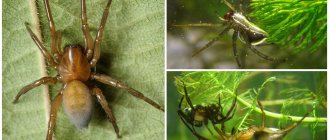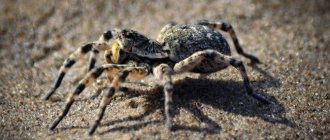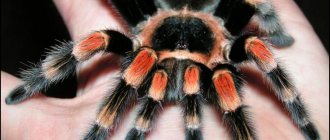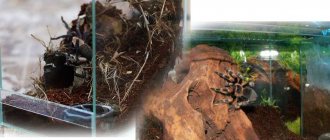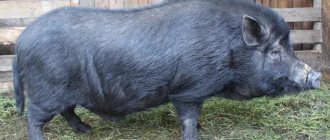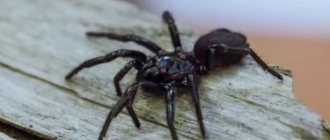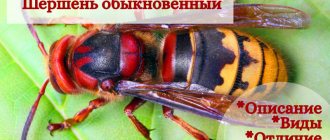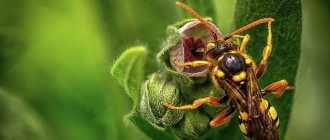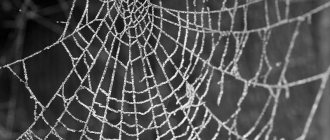A village in the Gomel region was attacked by large tarantula spiders (video)
Large spiders attacked the Gomel region. The problem is back! This time the insects encircled the village of Udarnoye, Lelchitsy district.
Residents meet them in their gardens, barns, and today one of these uninvited guests even snuck into the house!
Akin to a horror movie script. But seriously, eyewitnesses describe the tarantulas themselves as aggressive insects that are not afraid to attack. Maxim Vecherkov went on a dangerous business trip.
It was a fight, says Nadezhda . Seeing a huge shaggy spider approaching the baby's crib, she took the firecracker. But the guest did not even think about hiding - he began to jump sharply towards him.
The woman sounded the alarm. And you didn’t even have to show proof at the bank - just a day later the same spider made its way into the local school. Teachers immediately noticed the size and unusual color.
Situations began to repeat themselves as if they were carbon copies. Spiders were seen at a local medical center, then in a store, and at a construction site. In the village the only talk is about the insect invasion. And this is the second part of the story about tarantulas.
This is 150 kilometers from Udarny. According to experts, the spiders may have been accidentally transported with cargo.
Scientists confirm that this is a real South Russian tarantula. Can reach the size of a human palm. The species itself, although rare, is still found in our southeast. And due to climate warming, their habitat is expanding and their activity is increasing.
The tarantulas most likely come from the forest. It's literally 200 meters away. Although, by their nature, due to sensitivity to any vibrations, they should be very timid: sit in burrows and lead a hidden lifestyle. But, apparently, something went wrong - these, on the contrary, are too brave.
Scientists do not know what brought them to the village and why spiders approach humans. But such behavior, they say, is truly unnatural. They urge you not to panic and stay on the defensive.
Nikolai Galinovsky , entomologist, candidate of biological sciences: “One of the methods is treatment with repellent agents or ultrasound, as is the case with an ultrasound installation for cockroaches, in a socket, you can try for spiders.” And if the situation suddenly gets out of control, the regional center will have to be involved. The village authorities say that the problem cannot be solved on their own.
Mikhail Bovsunovsky , Chairman of the Udarnensky Rural Executive Committee: “Of course, we will attract those specialists who are necessary, if these are really spiders, and even dangerous, poisonous ones, of course, measures will be taken - this is not a joke.”
Spiders are poisonous. But with a caveat. The impact on humans can be compared to the bite of a hornet. It is not fatal, but in some cases, however, a severe allergic reaction may occur. In general, there are more than ten species of large spiders that can bite through human skin in Belarus. And not all of them are harmless.
Now in Udarny, volunteers are combing the surrounding area in small groups. They are looking for nests that have begun to appear in residential areas, near the first floors of apartment buildings. For now, spiders are simply caught with bait and locked in a jar to be shown to scientists later.
Dangerous animals: who to be afraid of in Belarus?
Summer in Belarus is a reason to go outdoors. Paths in national parks, hikes in swamps, overnight stays by the lake and other beautiful places can cause anxiety in a city dweller: is there something scary lurking in the grass, ready to crawl up and bite. We tell you who you should be afraid of in Belarus – and how to protect yourself from these dangers.
Snakes
The only poisonous snake in Belarus is the common viper. The snake looks like this: 50-70 cm long, gray to brown in color with a dark zigzag line along the ridge (although some can be completely black), with a rounded snout with poisonous teeth. You can meet it if you go hiking through forests and swamps, and also explore holes, stumps and old stones - the viper loves to hide there. When she meets you, she herself will most likely try to hide, and will attack only if her own safety is threatened.
What to do when meeting?
If you see a snake, do not make sudden movements and it is better not to come closer to find out if it is after all a snake. If a snake does bite you (the place of the bite is two punctate wounds), the main thing is not to panic (a viper bite extremely rarely leads to death). If a snake bites you on the hand, take off all rings, bracelets and tight clothing; if on the leg, take off your shoes (the limb will swell). Rinse the wound with clean water, squeeze out the poison from the wound (this is only relevant in the first minutes after the bite), disinfect the wound with alcohol or iodine. Place a splint on the limb (a board or stick covered with a soft bandage) to ensure its immobility, drink plenty of fluids (coffee and alcohol are not allowed) and go to the hospital as soon as possible, where there is a special serum. It is better for the bitten person to move as little as possible (it is better to transport him to the hospital while lying down). You cannot cut the bite site, cauterize it or apply a tourniquet to the limb - this can only worsen the matter.
What to do so as not to meet?
If you are hiking, look carefully at your step, choose closed shoes (high boots are reliable protection!), do not walk barefoot, do not try to approach the snake (for example, to take a photo of it - your Instagram will survive the absence of a photo with the caption “a minute before how I was bitten by a viper"). Check tree stumps and rocks before sitting on them.
Spiders
In Belarus you can find the South Russian tarantula (this is a spider about 3 cm in size, maybe larger), especially in the Gomel region in open areas near water bodies. They live in burrows and will most likely avoid humans, but they have venom and can also bite.
What to do when meeting?
If a spider bites you, wash the bite site with clean water and disinfect with alcohol or iodine. The spider is not very dangerous - most likely, you will experience swelling and pain at the bite site, but it is still better to consult a doctor as soon as possible. It can be a really dangerous situation if you develop an allergic reaction - take antihistamines and go to the nearest hospital.
What to do so as not to meet?
Carefully inspect all the places where you are going to sit or lie down - as well as everything that you are going to take with your hands.
Bees, wasps, hornets
Common summer inhabitants of forests and fields, which can bite.
What to do when meeting?
If a bee stings, use clean tweezers or a needle to remove the sting. Then treat all bites the same way: wash the bite site with clean water, disinfect with alcohol, iodine or hydrogen peroxide. Apply a cold compress and drink plenty of fluids. If the bite site quickly swells and becomes numb, or you begin to feel severe weakness and dizziness, take anti-allergy medications (antihistamines) and call an ambulance or go to the hospital immediately.
What to do so as not to meet?
If you see a nest, swarm or apiary somewhere, walk away without waving your arms. Also, in nature, it is better not to use cosmetics with a strong scent - it is believed that this may attract insects.
Ticks
Ticks are arthropods that thrive in Belarus and live in city parks and deep forests. For their life cycle, they need the blood of warm-blooded animals - and therefore another reason for concern is added to any of your picnics. The fact that someone drinks your blood is disgusting in itself, but in the case of ticks it is also dangerous - they can carry Lyme disease (tick-borne borreliosis, which affects the skin, joints and cardiovascular system), and in some regions even tick-borne encephalitis. In Belarus these are Belovezhskaya Pushcha and the Berezinsky Nature Reserve.
What to do when meeting?
If you suddenly notice a mole in a new place, take a closer look to see if the mole has legs - perhaps it is a tick. It must be removed - the sooner the better. Lubricating the tick with oil is useless. It is important to remove the tick completely without tearing it or leaving the head behind. This can be done with tweezers or a thread: grab the tick as close to the skin as possible and remove it using twisting movements. If the head comes off, remove it with a sterile needle, like a splinter, treat the bite site with alcohol. To prevent Lyme disease, immediately take the antibiotic doxycycline - it is prescribed by a doctor. You can submit a tick for research - it is carried out on a paid basis (addresses in Minsk are here).
What to do so as not to meet?
If you go into the forest, wear closed clothes and a hat. To hell with fashion: tuck your T-shirt into your pants, tuck your pants into your socks. Regularly inspect yourself and your friend for insidious black dots on clothing and skin: it is easier to remove a tick that is still crawling than one that has attached itself. Clothes can be treated with a special anti-tick product (regular insect repellent will not work here). If you know that you will be in an area where tick-borne encephalitis is common, get vaccinated in advance.
Wild animals
Even if you go hiking, you most likely won't see any wild animals. They hear people and move away themselves. They become dangerous if they defend their territory - or if they suffer from rabies.
What to do when meeting?
Rabies affects wild boars, badgers, foxes, hares, rodents, raccoon dogs, bats, horses, cows, cats, and dogs. Rabies is an absolutely fatal disease, and a series of vaccinations is the only way to prevent it. If you are bitten or scratched by a wild animal (and an unvaccinated domestic one too), immediately rinse the wound well with clean water, treat the edges of the wound with alcohol or iodine, apply a clean bandage and go to the hospital for vaccinations.
What to do so as not to meet?
If you see wild animals, don’t think that this is your chance to become a Youtube star. Don't come closer, don't make sudden movements, walk away calmly. In an adequate state, the animal will not approach people, but rabies deprives it of caution. So if a fox suddenly comes towards you, it is not because of suddenly awakened love for a person. Never pet or pick up wild animals, even the cutest ones.
Read also:
How to provide first aid | How to assemble a first aid kit
Winged guests
As experts from the NGO “Akhova Ptushak Batskaushchyny” note, every year more and more rare birds fly to Belarus. For example, in 2017, a discovery for Belarusian ornithologists was the Lapland plantain, which in 100 years has been documented only once in our country, and last winter experts met a record number of birds of this species in the entire history of ornithology.
In addition, according to birdwatch.by, the list of bird species in Belarus at the beginning of 2022 contains 329 names. Since 2000, it has included about 20 new species, as well as about 5 species that were recorded nesting for the first time.
Also among the unusual trends of recent years are cases of bats wintering in Belarus. Now, in order to protect the population of this animal, a shelter is being organized in the wildlife corner of the Republican Center for Ecology and Local History. Here the mice will spend the winter in the refrigerator. “Bats hibernate when the air temperature is below zero. But, since the winters are now warm, these animals are active until the New Year, which negatively affects their life. Without a sufficient supply of energy, these animals die in just a couple of days,” said Aleksey a researcher at the Laboratory of Molecular Zoology National Academy of Sciences Research Center for Bioresources .
The climate is just right. There are more rainfalls and droughts, but there have always been tornadoes Read more
And who crawled?
The tarantula also became an unusual guest in Belarus. A few years ago, bioresources specialists from the Scientific and Practical Center of the National Academy of Sciences of Belarus stated that tarantula spiders have already taken root in Belarus. After all, the first registrations of these spiders were noted back in 1928 in the vicinity of Rogachev. It’s just that now people are starting to see them more often. Therefore, you shouldn’t be too surprised by the news that someone found a tarantula in their dacha.
The praying mantis is also seen quite often in Belarus. Until recently, all insects of this species seen on the territory of our country were adults and flew well, so there was no evidence that they reproduce in Belarus. However, last year, ornithologists still managed to find a praying mantis larva while counting waterfowl on the territory of the Grodno Svisloch reserve. Although the first praying mantises were discovered in our country back in 1910 near Gomel, they began to be seen more often in recent years. According to experts, there is no need to be afraid of these insects: they are useful representatives of the fauna.
A series of changes
Over the past thirty years, average annual temperatures in Belarus have increased by 1.3 degrees. Experts say the climate is changing. And that's a fact. The natural conditions in which we are accustomed to living are also changing. And now everyone can feel this for themselves.
Despite the abundance of observations and research, people are still faced with climate mysteries. Therefore you need to be on your guard. It is possible that at some point you will discover a new species of animal.
Adam GRINEWSKI
